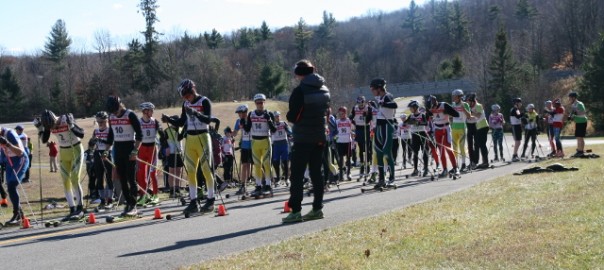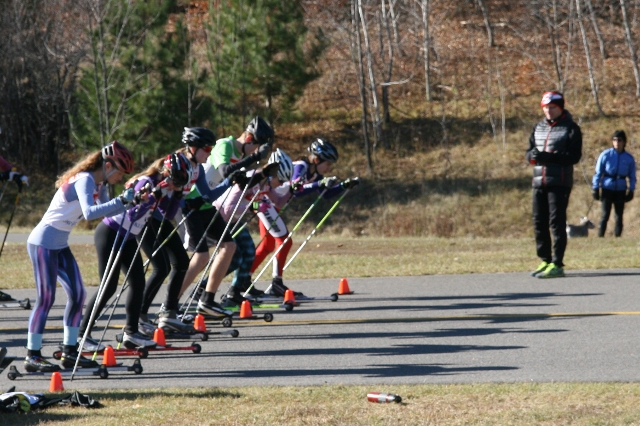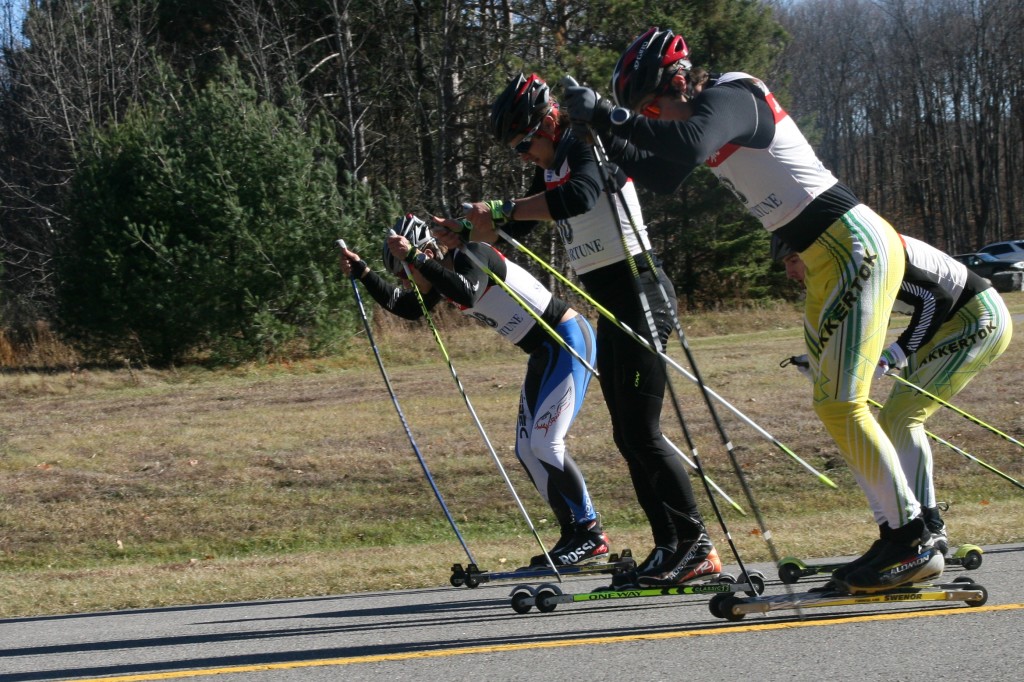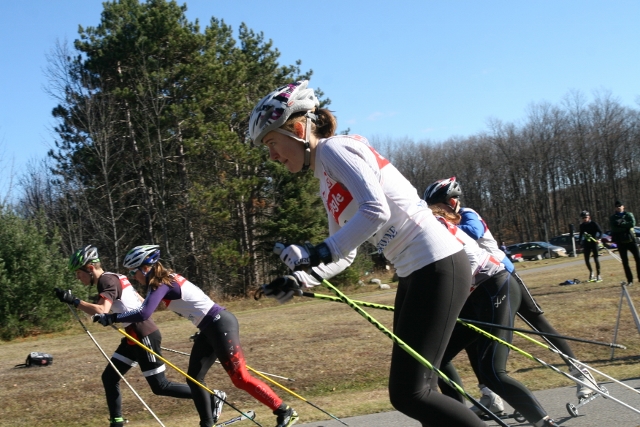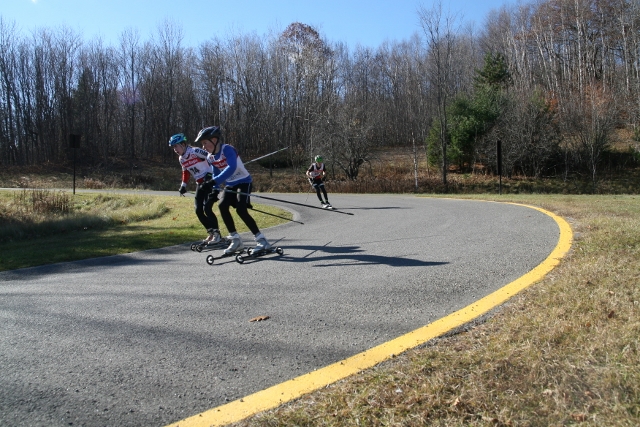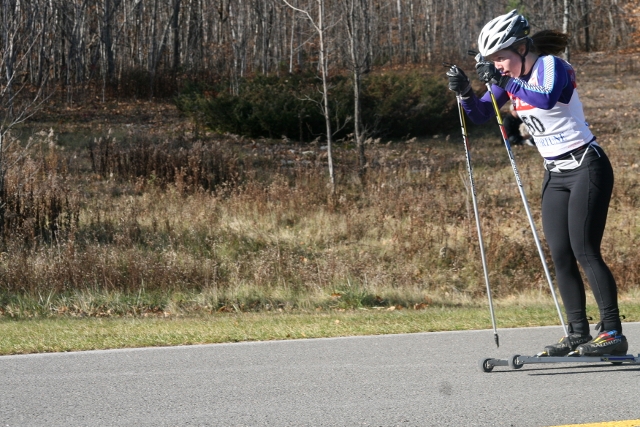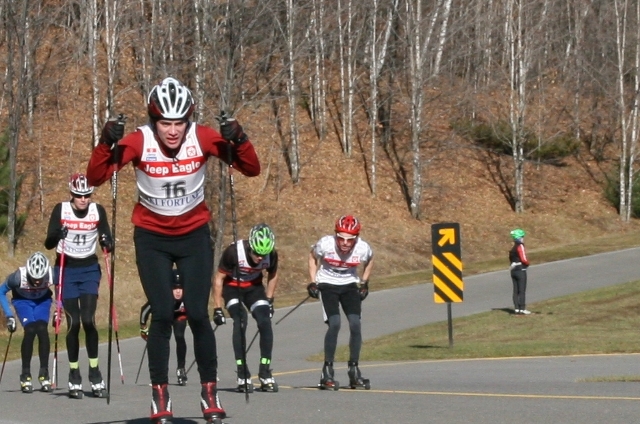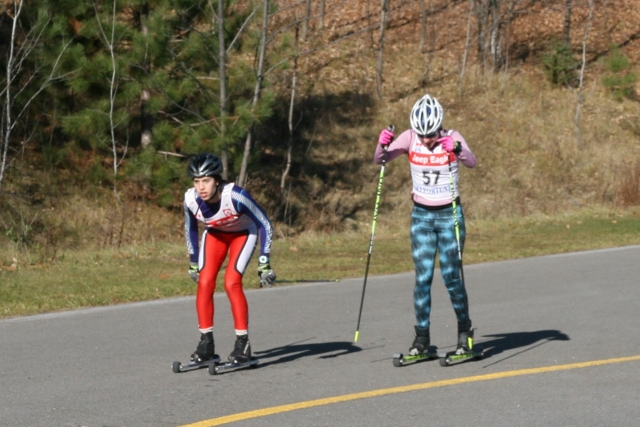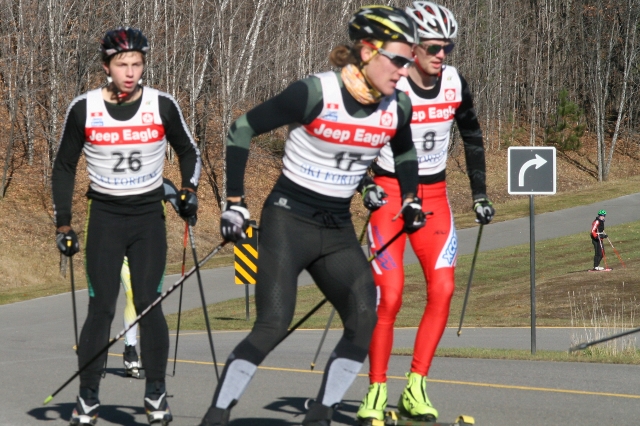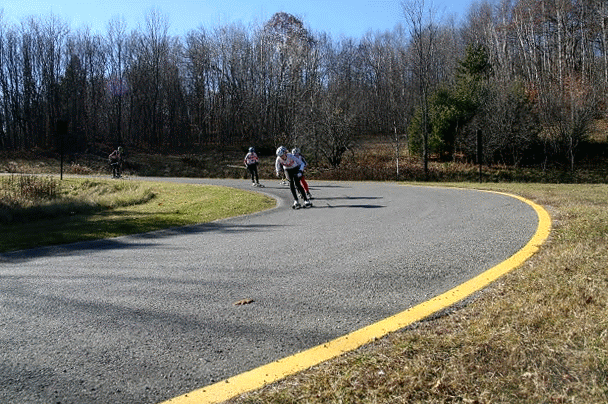National Capital Region Time Trial Series
This past weekend, Ottawa-Gatineau nordic ski clubs hosted the final event in the National Capital Region Time Trial Series, a classic sprint race. The Series has run monthly over the summer, allowing local and visiting cross country racers many opportunities to develop their racing strategies, compete against other athletes, and monitor their progress. The cross country ski dryland training season can be a long one, so events such as these are important to keep athletes motivated and allow them to stay in touch with that racing feeling.
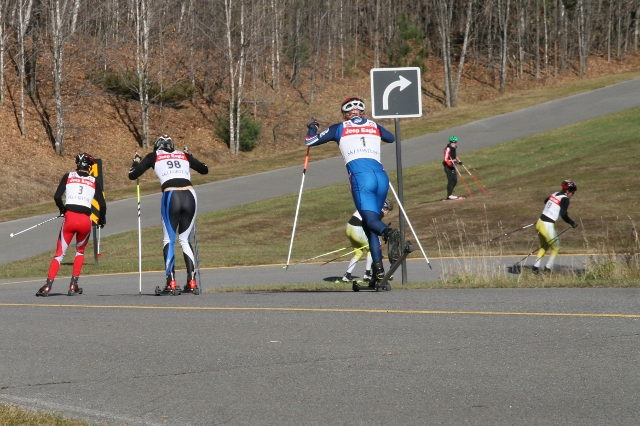 Technical downhill turn on the course
Technical downhill turn on the course
Over the last few years these time trials have grown in number, often approaching almost 100 athletes per event. Local ski clubs Nakkertok Nordic, Chelsea Nordiq, and Skinouk have come together to coordinate these races, and the hard work of coaches and volunteers has benefited the ski community tremendously.
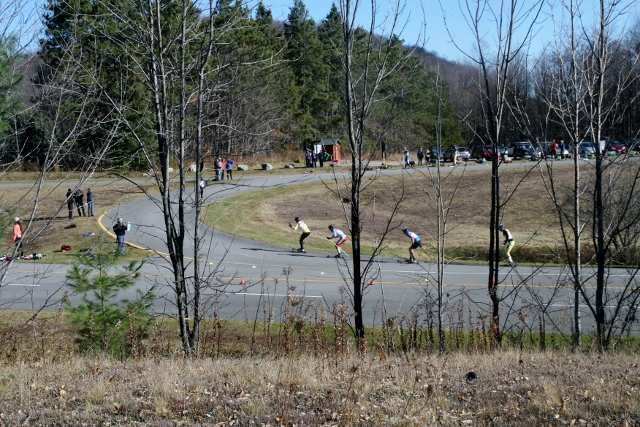 The venue for these events is the Gatineau Park parkways, a true rollerskier’s paradise, with over 30 kilometers of paved roads that includes long uphills and downhills. The parkways are closed to vehicular traffic at this time of year, and relatively few cyclists are still riding, making it a safe venue for such an event. During the Spring and Summer, parkways are closed at designated times on weekends, which is popular with many recreational athletes.
The venue for these events is the Gatineau Park parkways, a true rollerskier’s paradise, with over 30 kilometers of paved roads that includes long uphills and downhills. The parkways are closed to vehicular traffic at this time of year, and relatively few cyclists are still riding, making it a safe venue for such an event. During the Spring and Summer, parkways are closed at designated times on weekends, which is popular with many recreational athletes.
Classic Sprint Event
The King’s Court sprint venue was based at P5, and featured a fun 1 km loop. After racing a time trial to determine subsequent heats based on speed, racers competed in three head-to-head 6-person heats. The top 2 finishers in each race moved to a faster heat; finishers 3 and 4 remained in the same heat, and finishers 4 and 5 move to a slower heat.
Although gender and age typically designate who you race against, this format is purely based on speed (athlete and rollerski wheel speed!), which mixes things up in ways that are beneficial to learning, and you’ll get a mix of women, men, and age categories in the same event.
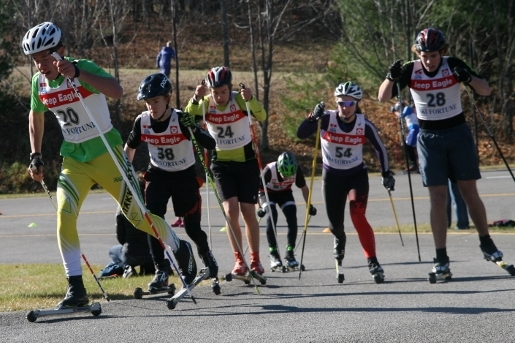
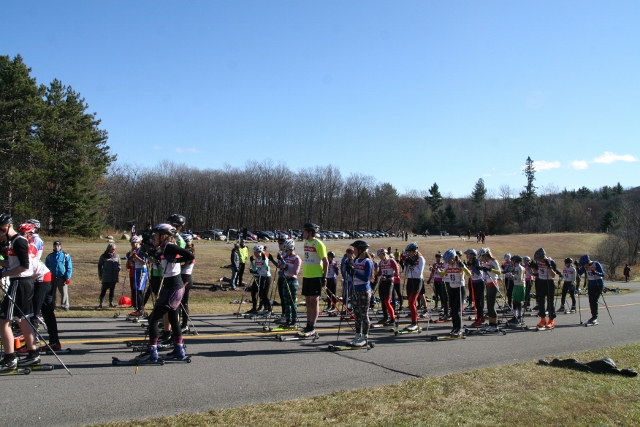 Mixed age and gender heats lined up and ready to start
Mixed age and gender heats lined up and ready to start
You’ll find results from the Qualifier here.
Advantages of the King’s Court Format
During the ski season, sprint races don’t allow all racers to develop the necessary skills and tactics needed to succeed at sprint racing. Typically, only the top 30 racers in the time trial advance to heats, and after the quarterfinal only 12 racers move on to the semi-final and final. Some racers never move beyond a time trial and don’t experience (or have a chance to improve) in head-to-head competition. This “King’s Court” format ensures that everyone has a chance to develop their sprinting abilities.
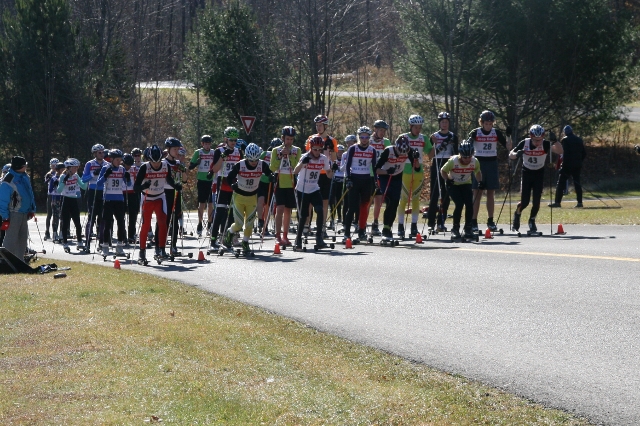 With 95 starters and a challenging course with U-turns, there was a lot of movement among competitors and ample opportunity to work on different strategies. A few racers tried double poling some of the heats (on skate rollerskis). This is a strategy sometimes used in some World Cup classic sprints, and most racers don’t typically have the chance to practice in head-to-head racing situations, making this event a great opportunity to try it out to see when it works. . . .
With 95 starters and a challenging course with U-turns, there was a lot of movement among competitors and ample opportunity to work on different strategies. A few racers tried double poling some of the heats (on skate rollerskis). This is a strategy sometimes used in some World Cup classic sprints, and most racers don’t typically have the chance to practice in head-to-head racing situations, making this event a great opportunity to try it out to see when it works. . . .
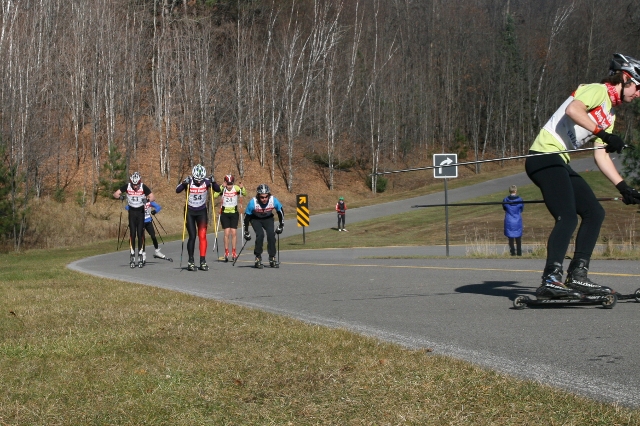 Double poling on skate skis was an advantage at this point in this heat
Double poling on skate skis was an advantage at this point in this heat
and when it doesn’t . . .
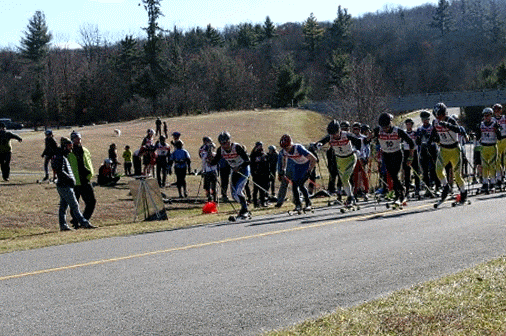 Double poling only can have disadvantages with an uphill start (can you spot the double poler?) but you may make up for it later. It depends on the course, and takes learning experiences such as these.
Double poling only can have disadvantages with an uphill start (can you spot the double poler?) but you may make up for it later. It depends on the course, and takes learning experiences such as these.
All in all it was a great event that showcased a terrific venue and a collaboration among clubs that has led to some pretty fine organization and athlete development opportunities for the nordic racing community. Many thanks to to the organizers from Nakkertok, Chelsea Nordic, and Skinouk for making this happen.
Pictures
Here are some more pictures of the event, and you’ll find a full a lot more here.
Share This:
